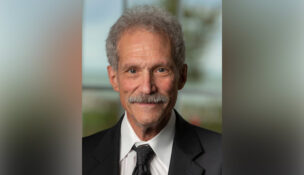( Not ) the whole truth: What to do when your client wants to lie
By: DOLAN MEDIA NEWSWIRES//February 3, 2015//
( Not ) the whole truth: What to do when your client wants to lie
By: DOLAN MEDIA NEWSWIRES//February 3, 2015//
Perjury is the classic, and extreme, problem in ethical witness preparation.
It’s a dilemma caused by the conflict between a lawyer’s obligations to zealously represent the client and preserve client confidences, and to preserve the court’s integrity.
The response is neither simple nor easy. However, understanding the extreme case helps us to understand the murkier, and in some ways more difficult, challenges.
Remedies fall under four umbrellas: persuasion, narrative, withdrawal and disclosure.
Persuasion
Without question, counsel has an obligation to try vigorously to persuade the client to tell the truth. One of the most instructive cases on this point remains the U.S. Supreme Court’s opinion in Nix v. Whiteside, 457 US 157 (1986).
In summary, Whiteside, a defendant in a criminal trial, told his lawyers that he wanted to take the stand and tell a false story. His lawyer told him that would be perjury and that the lawyer would have to advise the court and seek to withdraw.
Whiteside heeded the warning, testified truthfully, but was convicted.
Surprisingly, the 8th U.S. Circuit Court of Appeals reversed the conviction, agreeing with the defendant that he had been denied effective assistance of counsel under the Sixth Amendment by the lawyer’s action.
The Supreme Court — wisely, I think — reversed, reinstating the conviction. The court held that “the attorney’s first duty when confronted with a proposal for perjurous testimony, is to attempt to dissuade the client … .” (Id., at 995). More fundamentally, “the right to counsel includes no right to have a lawyer who will cooperate with planned perjury.” (Id., at 997).
The justices found that the attorney’s persuasion efforts were appropriate.
Narrative
The idea of a narrative was to try to take the attorney, as an officer of the court, out of the picture: to allow the client to take the stand, but stand mute while the defendant tells his false story in a narrative without assistance from counsel.
It seems, superficially, like an easy way out. The defendant gets his “day in court,” and the attorney does not actively assist in perjury.
In reality, though, it’s an endless minefield: Counsel is still an officer of the court, offering a client to the jury and having to continue to present evidence, argue the case and work with the client.
The Supreme Court in Nix discussed the “narrative” approach in a footnote: “Most courts treating the subject rejected this approach and insisted on a more rigorous standard.” (Id., at FN6). For good reason.
Withdrawal
For many, the last, best resort for counsel faced with a lying client is to withdraw from the case.
Perjured testimony is a problem for the courts and our system of justice. The attorney’s ethical dilemma is minor compared to the damage to the system and the public.
If ethical counsel withdraws, the client who intends to lie will presumably either not be as open with new counsel, so they don’t “know” about the perjury, or find more willing counsel.
So, counsel may have helped himself out of a dilemma, but not the courts. The result is perjured testimony, with even less hope of remedy.
Disclosure
We try to protect the attorney-client privilege fiercely, as we should for such an important protection. Even with such a difficult issue as perjured testimony, the power of the privilege has been so strong that disclosure to the tribunal was once a “Thou Shalt Not.”
However, that can leave a serious threat to our system of justice with no adequate remedy, and an officer of the court with no meaningful recourse. Movies and TV regularly portray lawyers putting on perjured testimony, but is that how we wish to act? Sooner or later the protections of the attorney-client privilege may have to yield to the dangers of perjured testimony.
There are no easy answers to the perjury dilemma, which is all the more reason not to underestimate the power of persuasion. However, persuasion for most clients has to be both ethical (“It’s the right thing to do”) and practical (“It’s the smart thing to do”), including:
- You’re not as good a liar as you think you are. We’re not dealing with “little white lies” in casual conversation. This is lying under oath, under the harsh glare of the court reporter taking down every word and the cross-examiner picking every word apart.
- There are endless examples of people — some of them very articulate and successful — getting into more trouble for the “cover-up” than for the underlying conduct. Just a few examples: presidents Nixon and Clinton, Martha Stewart and “Scooter” Libby. Don’t join them.
Most lawyers never have to encounter the perjury dilemma up close and personal. All lawyers hope they won’t. But we are, to some extent, swimming against the current, against a media culture that too often revels in scandal and the scandalous, and too easily forgives or forgets the liar and his lies.
Just because it hasn’t happened to you doesn’t mean it won’t. Hope for the best, but plan for the worst.
Daniel Small is a partner in the Boston and Miami offices of Holland & Knight. A former federal prosecutor, he is the author of the American Bar Association’s “Preparing Witnesses” (4th Edition, 2014).
Legal News
- A conservative quest to limit diversity programs gains momentum in states
- Wisconsin prison inmate pleads not guilty to killing cellmate
- Waukesha man sentenced to 30 years for Sex Trafficking
- 12-year-old shot in Milwaukee Wednesday with ‘serious injuries’
- Milwaukee man convicted of laundering proceeds of business email compromise fraud schemes
- Giuliani, Meadows among 18 indicted in Arizona fake electors case
- Some State Bar diversity participants walk away from program
- Wisconsin court issues arrest warrant ‘in error’ for Minocqua Brewing owner
- Iranian nationals charged cyber campaign targeting U.S. Companies
- Facing mostly white juries, are Milwaukee County defendants of color truly judged by their peers?
- Milwaukee Mayor speaks in D.C. Tuesday at White House water summit
- Chicago man sentenced to prison after being caught with ‘Trump Gun’
WLJ People
- Power 30 Personal Injury Attorneys – Russell Nicolet
- Power 30 Personal Injury Attorneys – Benjamin Nicolet
- Power 30 Personal Injury Attorneys – Dustin T. Woehl
- Power 30 Personal Injury Attorneys – Katherine Metzger
- Power 30 Personal Injury Attorneys – Joseph Ryan
- Power 30 Personal Injury Attorneys – James M. Ryan
- Power 30 Personal Injury Attorneys – Dana Wachs
- Power 30 Personal Injury Attorneys – Mark L. Thomsen
- Power 30 Personal Injury Attorneys – Matthew Lein
- Power 30 Personal Injury Attorneys – Jeffrey A. Pitman
- Power 30 Personal Injury Attorneys – William Pemberton
- Power 30 Personal Injury Attorneys – Howard S. Sicula












